Hey There! We may earn a commission from links on this page. This helps support the site and is at no extra cost to you. Thanks!
Want to learn more about Vintage Wiener Werkstatte Jewelry? Learn about the history, designers, collectible pieces and where to buy.
“The works of the Wiener Werkstatte show riches that have been concealed inside the material, a treasure that had to be raised,” contemporary Austrian journalist and art critic, Josef August Lux, on the Werkstatte's jewelry.

Brief History of the Wiener Werkstatte
The Wiener Werkstätte (“Vienna Workshop”) was established in 1903 in Vienna, Austria, by Josef Hoffmann, architect; Koloman Moser, graphic designer and painter; and a financial backer, industrialist Fritz Waerndorfer. The original members also included Dagobert Peche, architect; Karl Kallert, silversmith; and Konrad Koch and Konrad Schindel, both metalworkers. The Werkstatte was a cooperative of artists and artisans with the goal of narrowing the gap between artistic genres, giving each its due for the betterment of the whole, and affording each maximum exposure.
Ceramics, fashion, silver, metalwork, leather work, wood working and the graphic arts were included in the “fine arts” that once defined painting and sculpture. The group determined that they would provide the highest quality materials and workmanship for an elite clientele who would appreciate the artistry as well as the practical usage. The Werkstätte allowed complete artistic freedom which resulted in a prodigious output of designs executed by many skilled craftsmen and distributed via a large cooperative network.
Jewelry was among the first objects produced by the firm. Josef Hoffmann and Koloman Moser were determined that jewelry would be valued for its artistic merit and not simply for how much it cost. It was because of the Werkstatte that the first museum exhibition composed only of jewelry occurred.
Many of the wearable works of art produced by the Wiener Werkstätte were unique. A piece featured the designer's artistry and the craftsman skill. The value was not in the materials used. These miniature works of art made a statement about the wearer—that she was a woman of the arts and sophisticated. The idea of jewelry as a status symbol was eroding. And the society ladies loved it! They often wore their jewels as a symbol of their independence. They also became unofficial “models,” advertising the message of the Werkstätte.
In addition, a magazine, German Art and Decoration, beautifully photographed the jewelry (as well as all Werkstatte products) to display on their pages. For the jewelry, they included in the photograph the the handmade leather box that accompanied each piece—a keepsake in itself.
The signature style of the Werkstatte for brooches, hair combs, necklaces and belt buckles was an outer framework, usually rectangular, filled with various elements such as sinuous tendrils, flowers and leaves that softened the severe frame. Multi-colored gemstones were used much as a painter uses his palette. This style left a good deal of open space, so that the wearer's garments would show through, adding interest and color.
Following World War I, the workshop had financial problems and problems getting the necessary materials. It never regained its pre-war prestige. A last-ditch effort to establish a branch in New York City failed miserably. By 1932, the Werkstatte was forced to close.
Wiener Werkstatte Jewelry Designers
Josef Hoffmann, architect, created jewelry designs that were geometric. In fact, he used the same graph paper to draw his jewelry designs as his building designs. Later, Josef's style became less severe, more sensuous, influenced as he was by Japanese prints.
Koloman Moser, graphic illustrator, preferred designs based on flora and fauna. His signature pieces were pendants swinging from long chains that were worn with loose, flowing clothing.
Josef Maria Olbrich, architect, was one of the original members of the Wiener Werkstatte. He experimented with designing ceramics, musical instruments and multi-shaped windows, as well as jewelry. His jewelry is very difficult to find. His pieces tend to be simple and geometric but with a harmonious fluidity.
Carl Otto Czeschka, painter, also was inspired by nature. Many of his designs included a vine motif. It was Carl who was at the forefront of the Werkstatte's transition from geometric designs to a more decorative approach and to an inclusion of both animal and human figures.
Eduard Josef Wimmer-Wisgrill, architect, designed sets and costumes for theatrical productions. He was head of the fashion department for the Werkstatte, and his jewelry was an important element in the clothing he created. He was partial to jewelry adorned with leaves.
Dagobert Peche, architect, had a true passion for jewelry. He was meticulous with his designs, creating each piece as one would a sculpture—by considering how it would look from every angle. He favored mythological themes and characters. Many of his pieces were rendered in ivory due to metal shortages during World War I. Josef Hoffman said that he “was the greatest ornamental genius Austria had produced since the Baroque” (a cultural movement in the early 17th century).
Maria Likarz-Strauss, enamelist and textile designer, produced nearly 200 designs for the Werkstatte. Workshop, most of them in geometric or abstract patterns. Her designs were among those that paved the way for the Art Deco style. Maria's sewed thousands of glass beads around a silk chord for the stylish yet quirky ladies of the time.
Max Snischek, textile designer, was most famous for his fashions, but he also worked in enamel and jewelry, his style sophisticated, sleek and often with the angularity that would become Art Deco.
Wiener Werkstatte Jewelry Hallmarks
Most of the objects produced in the Wiener Werkstatte were stamped with the double “W” and two monograms, one for the designer and one for the craftsman. It was a way to acknowledge the importance of all three. Koloman Moser designed the monograms—square shaped for the artists and round for the artisans.
You can see examples of these monograms at Lang Antiques.
Materials Used in Wiener Werkstatte Jewelry
- Gold
- Gilt
- Silver
- Copper
- Enamel
- Ivory
- Beadwork
- Agate
- Synthetic Ruby
- Malachite
- Lapis lazuli
- Moonstone
- Sapphire
- Chrysophase
- Opal
- Pearl
Tips for Buying Wiener Werkstatte Jewelry
- The jewelry created at the Wiener Werkstatte is highly sought after. Some pieces are exhibited in museums and many more are held in private collections. However, there are pieces out there. If you run into any, please be sure to tread carefully.
- Because of the number of jewelry designers associated with the Werkstatte, take the time to learn as much you can about them and and their work. There are books on Werkstatte jewelry and on all Werkstatte products.
- A plus in determining if a piece if genuine is the unusual monogram each artist and craftsman used. They would be difficult, if not impossible, to imitate.
- Feel confident in the vendor.
- Do not buy on impulse.
- Read return policies carefully.
Other Collectibles From the Wiener Werkstatte
Furniture
From 1904 for several years the Wiener Werkstaette had its own carpentry workshop. But only few furniture´s were made there.
Most of the furniture known as Wiener Werkstaette Furniture were made by such excellent cabinet-makers as: Portois & Fix, Johann Soulek, Anton Herrgesell, Anton Pospisil, Friedrich Otto Schmidt, and Johann Niedermoser.
Some historians now take measure to the Werkstaette´s articles of association, when they agreed that the Wiener Werkstaette is a production cooperative with equality of designing artists and executing craftsmen and they say that there are almost no original Wiener Werkstaette Furniture existing.
Our opinion is contrary to that. We belive, that every piece of furniture, designed by the masters of the Wiener Werkstaette, ordered, presented and sold by the Wiener Werkstaette, and has undergone the extreme severe quality test of the masters, finally was sometimes signed Wiener Werkstaette, should be accepted Wiener Werkstaette.
Hoffmanns significance as an early industrial designer for bentwood furniture can hardly be overestimated. For the firm Jakob and Josef Kohn he designed a furniture series which convinced through its simple forms and also had a timeless elegance.
Works designed by Josef Hoffmann, Mathilde Flögl, Carl Witzmann, Carl Breuer, Gustav Siegel, Emanuel Josef Margold, Koloman Moser, Dagobert Peche, Josef Urban, Otto Prutscher, Richard Luksch, Oswald Haerdtl, Phillipp Häusler, C.O. Czeschka, Victor Lurje
Hand-Painted Silks
From 1905 the Wiener Werkstatte produced handpainted and printed silks. The Backhausen firm was responsable for the machine-printed and woven textiles. The varitey of objects produced from the Wiener Werkstatte was immense.
As well as leather goods, enamel, jewelry, postcards and ceramic, the Wiener Werkstatte even had a hat department. After the wartime of the First World War the Wiener Werkstatte was influenced by a new generation of artists and craftsmen. The most important impulses came from Dagobert Peche.
Ceramics
In 1907, the Wiener Werkstätte took over distribution for the Wiener Keramik, a ceramics workshop of kindred spirit headed by Michael Powolny and Berthold Löffler.
Designed by Gudrun Baudisch, Josef Hoffmann, Hilda Jesser, Dina Kühn, Bertold Löffler, Dagobert Peche, Richard Luksch, Jutta Sika, Susi Singer and Vally Wieselthier
Fashion and Textiles
The founding of textile and fashion divisions in 1909 and 1910 brought a further shift in the Wiener Werkstätte's emphasis-- away from the architectural and toward the ephemeral.
Designed by Mathilde Flögl Lotte Föchler-Frömmel, Josef Hoffmann, Hilda Jesser, Ludwig Heinrich, Maria Likarz, Rita Luzzatte, Koloman Moser, Dagobert Peche, Kitty Rix, Max Snischek and Franz von Zülow
Metalwork
Designed by Karl Hagenauer, Josef Hoffmann, Berthold Löffler, Franz Metzner, Koloman Moser, Dagobert Peche, Otto Prutscher, Max Snischeck, Josef Urban and Julius Zimpel
Glass
Designed by Josef Hoffmann, Robert Holubetz, Hilda Jesser, Koloman Moser, Dagobert Peche, Michael Powolny, Otto Prutscher, Gertrud Weinberger andJulius Zimpel
Fashion, Jewelry and Accessories
Works designed by Lotte Calm, Christa Ehrlich, Trude Hochmann, Josef Hoffmann, Mela Köhler, Maria Likarz, Berthold Löffler, Fritzi Löw, Koloman Moser, Dagobert Peche, Reni Schaschl, Agnes ("Kitty") Speyer, Amalie Szeps and Eduard Josef Wimmer-Wisgrill
Conclusion
Keep your eyes on eBay for when a Wiener Werkstatte item is put up for sale. Click here.
Also, Etsy has a selection of items on their Wiener Werkstatte pages.

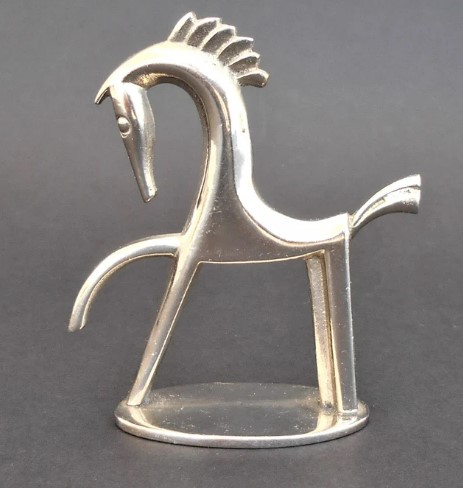
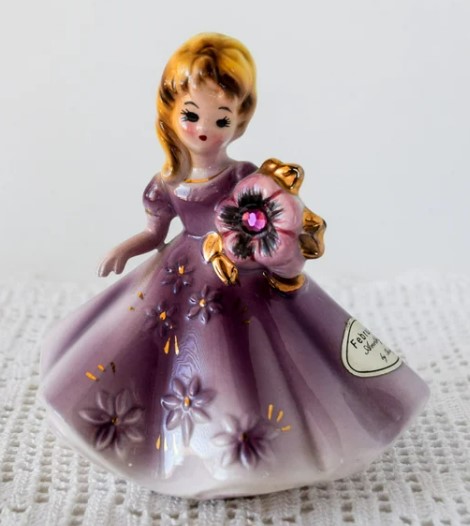
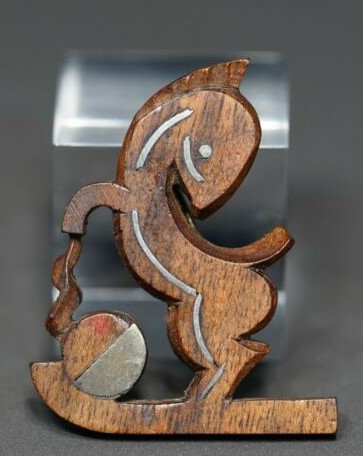
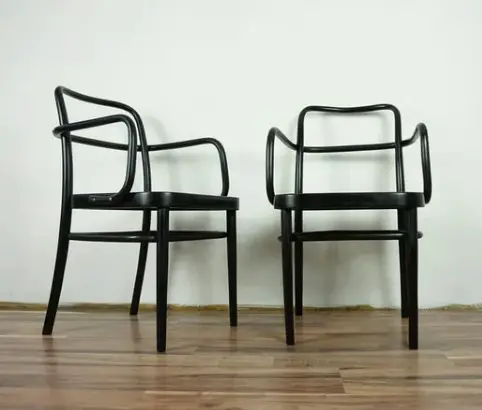
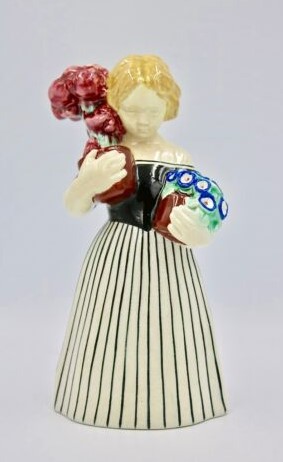
Going to Vienna for first time in May for 12 days. Looking to purchase WW items if possible, either originals or contemporaries copies of high quality. Any shops or galleries that you trust and recommend? Thanks.
Hi Laura,
Yes, check out Oesterreichische Werkstaetten, Karntner Strasse 6, 1010, Wien. They sell high-quality WW reproductions. Also try Antik & Co, Wipplingerstrasse 20, 1010, Wien. You’ll find authentic WW pieces here.
Viel Spass!
Susannah